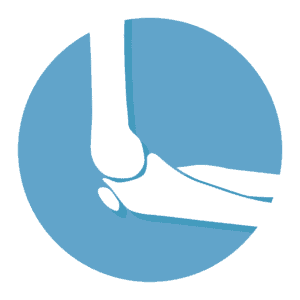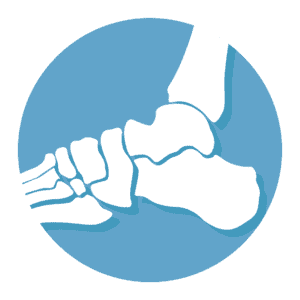
Ankle Sprains
Ankle sprains happen when one or more ligaments in the ankle stretch or tear from suddenly bearing an unexpected force. This can happen if a person makes a sudden twisting motion, receives a blow to the ankle, or steps on an uneven surface. This condition is very common, and it occurs in all age groups and in athletes and non-athletes.
What causes an ankle sprain?
There are three types of ankle sprains: lateral inversion, medial eversion, and syndesmosis. Lateral inversion is the most common. This occurs when the foot rolls outward, which harms the lateral ligaments on the outside of the ankle. Medial eversion occurs when the foot rolls inward, harming the medial ligaments on the inside of the ankle. Syndesmosis occurs the least of all ankle sprains, but occurs most often in sports that involve contact, like football. Syndesmosis happens when the upper part of the ankle rolls inward while an internal rotation of the tibia occurs simultaneously.
Symptoms and Diagnosis
Symptoms of ankle sprains vary according to the degree of the sprain. Mild pain, bruising, trouble walking, inflammation and tenderness are syptoms of a first degree sprain. A first degree sprain is diagnosed if one or more ligaments is stretched. There may be some fiber damage to the ligament, but this is the least severe sprain. A second degree sprain has symptoms of moderate pain and disability, inflammation, and bruising. A person with a second degree sprain is unable to bear weight. A second degree sprain is diagnosed if the ligaments are partially torn. A third degree sprain is the most severe, resulting in symptoms of severe pain, bruising, joint instability, swelling, and function loss. This occurs when the ligaments are completely torn.
How are ankle sprains treated?
The first line of treatment with ankle sprains is rest, ice, compression, and elevation (RICE). Non-steroidal anti-inflammatory medication can be used to ease swelling and pain. Your doctor may prescribe a method of immobilizing the affected area with a device like a cast or brace, depending on the extent of the injury. Rehabilitation exercises may be prescribed. Adherence by the patient to these exercises can determine the speed of recovery. If the sprain is very severe, surgery may be needed to reconstruct the ligament.








